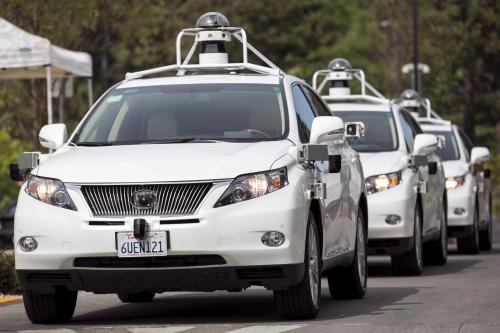The conventional car is in the situation where the typewriter was in the 1980s. It will soon be replaced, and the coronavirus crisis will accelerate this process. Forty years ago, typewriters dominated the (written) world, 10 years later they no longer existed. It was just too inefficient and tedious to type everything again if you made a small mistake. But the typewriters got better and better. At that time, the IBM Selectric III typewriter with a ball button was the Ferrari of typewriters. My mother, who was a gifted secretary, bought such a machine with great joy in 1988—and then realized in 1990 that it was practically worthless.
There is a feeling that the car industry is in a similar situation: perfecting an old model, also like Kodak kept on perfecting the film reels, not realizing that something completely different—digital photography—has been emerging.
Cars in post-war Europe contributed even more to the economic boom than typewriters. Thanks to VW, BMW, Daimler-Benz, Peugeot, Renault, Fiat, and American and Japanese producers, mobility became possible and affordable.
Despite the incredible success of the automobile, not only in Germany, the conventional car is one of the greatest wastes of all time: Although they are built to drive, cars just stand around 95 percent of the time—in cities even on average 97 percent. During COVID-19, traffic has declined by around 80 percent in most cities in Europe, which means that a typical car was only in use 1 percent of the time. Cars should drive—not stand—and it makes no sense to use one of the most valuable investments of every household so little.
In addition to this gigantic waste of raw materials, there is also the waste of valuable space, especially in the cities. But even if the cars are moving, great damage can occur. The worst are the deaths and injuries caused by road traffic. According to estimates from the World Health Organization, 1.3 million people died in road traffic worldwide in 2019. It would be like simply erasing a city the size of Munich every year. Globally, more people are killed in road traffic than by AIDS (around 1 million), malaria (670,000), and more than 10 times as much as by wars and attacks (125,000).
Driverless cars will dramatically minimize the number of deaths and injuries, conserve resources, and save a great deal of time for each individual. However, the upheaval in the automotive industry will not be fueled technologically but economically. When driverless cars (and trucks) become commonplace, transportation will be so cheap and convenient that owning your own car is no longer necessary nor profitable. There will also be more demand because people who cannot afford to buy a car or are not able to drive (children and elderly people) can be transported conveniently and cheaply. The additional (latent) demand will further reduce prices. We saw a similar effect in the telecoms sector when new business models, especially prepaid options, increased the number of users and created economies of scale, so that prices declined, and poorer people could also afford a cell phone.
Here is an example of an average car owner who uses his vehicle 36 hours a month, i.e., 9 hours a week.
- A car costs at least 600 euros per month (including acquisition costs/depreciation, fuel, parking fees, insurance, repairs, tolls and motorway fees, and the occasional parking ticket).
- The opportunity costs of driving a car are at least 360 euros if you only assume minimum wage for each hour driven. If you use your car much less, then the case for owning your own car is even weaker.
- The total costs amount to almost 1,000 euros per month. There are now car-sharing, car-hailing, and soon driverless options that are starting to alter the economics of owning a car.
- A typical Uber trip costs around 10 euros for 10 kilometers, around half of which goes to the driver. If the driver falls away, then 10 kilometers costs about 5 euros. This means that you can drive over 2,000 kilometers a month in a driverless taxi for the same cost as owning a conventional car (see Figure 1).
Figure 1. The economics of owning a car will change
Source: Analysis by Alexandra Soininen for “Europe 4.0 – Addressing the digital dilemma,” forthcoming 2020.
As people tend to get wealthier, our time will become more precious. In order to use the time productively, more and more people will appreciate that they can gain a lot of time if a robot drives them.
Three additional shifts will increase demand for new forms of mobility:
- The COVID-19 pandemic will further accelerate the mobility revolution. As more people embark on home-based work, they will commute less; when they move, alternative means of transport will become more attractive.
- Concerns for climate change. The millennial generation is increasingly driven by concerns for climate change and immaterial values. As they form families they will also increasingly benefit from new forms of urban living, especially the conversion of parking spaces into parks and green spaces.
- The rising silver economy. The number of seniors will rise rapidly, especially wealthy seniors. Seniors want to remain mobile, and driverless mobility will make their lives much easier.
Some readers will surely ask what happens to all those drivers who enjoy driving and who cannot imagine a life without a steering wheel? There are historical forerunners here too. Just 120 years ago, horses dominated daily locomotion. Few could imagine mobility without horses. Today, you can rent horses for personal fun and ride around. Likewise, there will also be car courses in the future in which enthusiastic drivers can let off steam.
Note: I would like to thank Alexandra Soininen for research assistance.







Commentary
The end of the car as we know it: What COVID-19 means to mobility in Europe
September 28, 2020